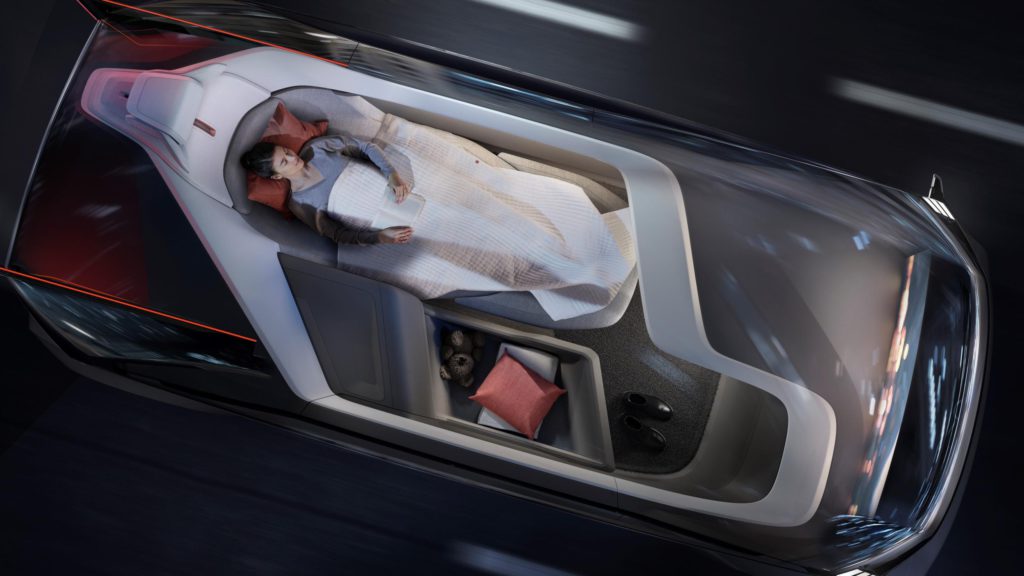Volvo autonomous concept redefines the uses of mobility
06 September 2018

6 September 2018
Volvo has launched a new concept of an autonomous vehicle, taking the timesavings that the technology offers and weaving them into a passenger’s time in such a vehicle.
The Volvo 360c autonomous concept environments reflect the potential for change in the fundamental structure of how people live, by transforming unproductive or boring travel time into useful and enjoyable minutes or hours on the road, the company believes.
Fully autonomous and electric travel offers a range of advanced safety and environmental benefits, such as less pollution, less traffic congestion, and related health and lifestyle advantages for those living in cities. It also opens up possibilities for more residential freedom, reduced pressure on real estate pricing and more affordable home ownership.
′The 360c explores what becomes possible when we remove the human driver, using new freedoms in design and recapturing time – it’s a glimpse at how autonomous drive technology will change the world as we know it. The possibilities are mind-boggling,’ said Mårten Levenstam, Senior Vice President of Corporate Strategy at Volvo Cars.
The concept presents four potential uses of autonomous driving vehicles – a sleeping environment, mobile office, living room and entertainment space – representing an attractive travel option that could rival air, bus and train providers, but with competitive advantages in comfort, convenience and privacy.
One example of this is the 360c’s potential as a lucrative competitor to short-haul air travel, a multi-billion-dollar industry comprising airlines, aircraft makers and other service providers. The 360c sleeping environment enables first-class private cabin travel from door to door, without the inconvenience of airport security, queuing, and noisy and cramped airliners.
Autonomous safety
Autonomous technology won’t be an overnight sensation but will come gradually in a mixed traffic situation where driverless cars without a human driver will share the road with other road users.
In such a traffic situation, it will no longer be possible to make eye contact with and learn about another driver’s intentions, a central element of today’s everyday traffic interaction.
As part of the development of the 360c, Volvo Cars’ safety engineers decided to tackle this challenge of how to establish a safe means of communication between fully autonomous cars and other road users.
Additionally, the focus was to create a universally applicable standard, so that other road users do not have to consider the make or brand of individual autonomous cars.
The 360c addresses this challenge with a system comprising external sounds, colours, visuals and movements, as well as combinations of these tools, to communicate the vehicle’s intentions to other road users. This means it is at all times clear what the car will do next.
Crucially, while the design of the 360c safety communication technology focuses on making the car indicate its own intentions to other road users, it will never issue directions or instructions to other road users.
′We strongly believe this communication method should be a universal standard, so all road users can communicate easily with any autonomous car, regardless of which maker built it,’ said Malin Ekholm, Vice President at the Volvo Cars Safety Centre. ′But it is also important that we do not instruct others what to do next, in order to avoid potential confusion. Our research shows this is the safest way for fully autonomous cars to communicate with other road users.